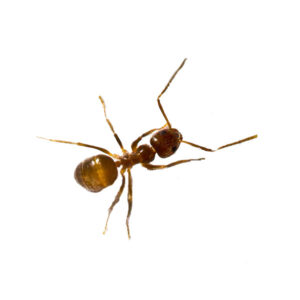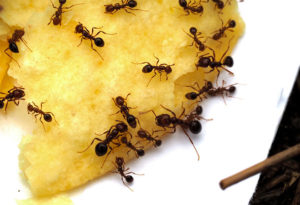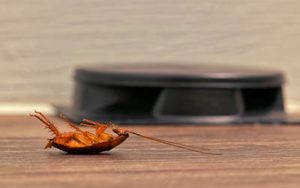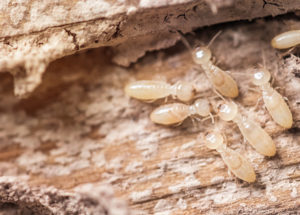Have mosquitoes taken over your backyard?
Are you afraid to spend an evening outdoors grilling and watching a football game for fear of being bitten?
As much as you may try to avoid mosquitoes in your outdoor space, these pests are stubborn and have a way of taking over. Mosquitoes leave behind itchy bites and carry disease such as the sometimes fatal West Nile Virus.
When traditional pest control methods are no longer effective, you need a safe, family friendly mosquito system to rely on.
At Dugas Pest Control, we believe The CoastalMister Mosquito System is hands down the best mosquito control system on the market today. This system automatically sprays a fine mist of pyrethrum-based insect repellent at certain times of the day. The system repels and kills mosquitoes around the yard and gives homeowners the peace of mind that their backyard is safe and comfortable.
What Makes the CoastalMister System the Best?
If you’ve tried repellents that haven’t worked, we can understand that you’ll be skeptical with other types of products. The CoastalMister System is a different type of product, and it has been proven to work. The system has been built by some of the country’s finest entomologists and pest management professionals. The equipment included in the system is of the highest quality, and it can only be installed by licensed professionals, such as Dugas Pest Control. This is how the system sets the standards for perfection.
In addition to the actual construction and mechanism of the CoastalMister System, the best insecticides are used. Dugas Pest Control will determine the right product, formulation and dosage based on your needs. Generally speaking, a pyrethrum-based insect repellent will be used, and these repellents kill adult mosquitoes. The mist that goes off not only targets mosquitoes, but also rids the property of flies and gnats, which are also responsible for drawing in mosquitoes.
Does the System Require a Lot of Maintenance?
We know you’re busy, and the last thing you need is another system to work with. Fortunately, the CoastalMister Mosquito System is maintenance free. The spray duration, frequency and timing are controlled by an electronic mechanism so you never have to worry about a thing! If you do want control, there are four operation modes: fully automatic, manual, remote control and timer function. So, if you want more coverage, you can operate the system from indoors and provide yourself and your guests with additional protection.
The CostalMister will need to be refilled, and this depends on how often the system goes through the repellent. Once your individual usage is calculated, your installer can tell you how often the repellent will need to be refilled. The good news is that you can set the system to spray more repellent in the summer and fall when mosquito numbers are worse, conserving the mists in the winter when the threat of mosquitoes is lower.
Benefits to Choosing the CostalMister System
Louisiana is home to mosquitoes, and if you’ve been struggling with them in your yard, now is the time to take control. The CostalMister System can be installed by a professional from Dugas Pest Control, offering the following benefits:
-
Intuitive operation, as the system is set to the size and layout of your yard
-
Effective pyrethrum repellents that kill and repel mosquitoes, gnats and flies
-
System focuses on the areas where you spend the most time
-
Hands-free, no-fuss operation
-
Nozzle and tubing are hidden for a seamless look
-
Peace of mind that your family is protected from mosquito-borne diseases
-
System starts working immediately from the time of install
The CoastalMister Mosquito System is a wonderful option for families, but it also works well for businesses. As we learn more about the types of diseases that are spread from mosquitoes, it becomes more important for everyone to work together to decrease the mosquito population around our homes and businesses. The CostalMister System removes the threat from the equation and offers the unsurpassed peace of mind that we are doing everything we can to protect the people that matter most.


 Have you seen ants in your home that you don’t recognize? A new speciest of ants is taking over Louisiana, and they are being called “crazy ants”.
Have you seen ants in your home that you don’t recognize? A new speciest of ants is taking over Louisiana, and they are being called “crazy ants”.
 When reviewing the various services that pest control companies in Louisiana offer, you’ll find that some businesses offer
When reviewing the various services that pest control companies in Louisiana offer, you’ll find that some businesses offer  No one likes roaches, except maybe roaches themselves. When you find one in your home, you most likely have more making themselves right at home somewhere you can’t see them.
No one likes roaches, except maybe roaches themselves. When you find one in your home, you most likely have more making themselves right at home somewhere you can’t see them. Subterranean termites are the most destructive pests in our country, and they cost homeowners and businesses billions of dollars each year. They are found in all states except for Alaska, and they are most common in the southern states. Louisiana is one of the top states for termites because of our warm, subtropical climate. Even though termites are known as pests to humans, they hold an important part in our ecosystem.
Subterranean termites are the most destructive pests in our country, and they cost homeowners and businesses billions of dollars each year. They are found in all states except for Alaska, and they are most common in the southern states. Louisiana is one of the top states for termites because of our warm, subtropical climate. Even though termites are known as pests to humans, they hold an important part in our ecosystem. When you think of the word “swarm,” the image of a group of insects flying together may come to mind. Yet when it comes to swarms in the termite world, the word means something very different.
When you think of the word “swarm,” the image of a group of insects flying together may come to mind. Yet when it comes to swarms in the termite world, the word means something very different.